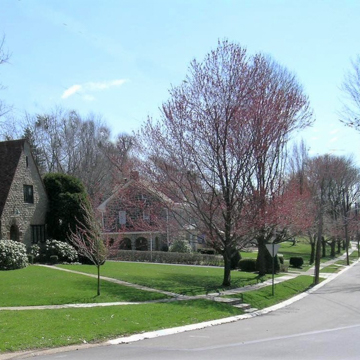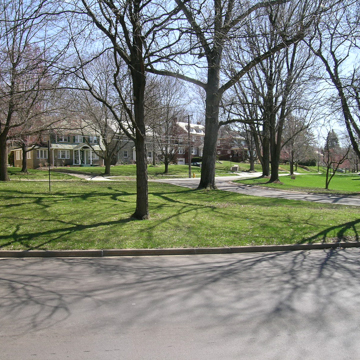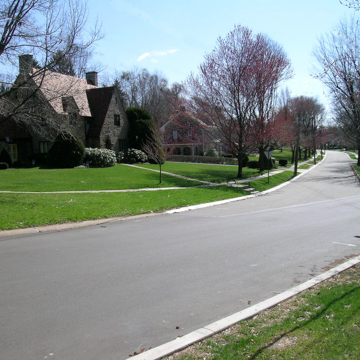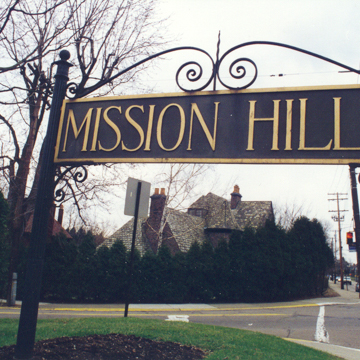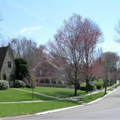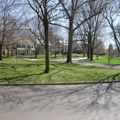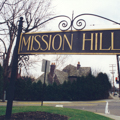Mission Hills, one of the best of the interwar developments in Mount Lebanon, was promoted by local realtor Lawrence Stevenson in 1921, and modeled after its namesake, developer Jesse Clyde (J.C.) Nichols’s subdivision in Kansas City. Stevenson subdivided a steeply sloping site into more than 300 lots, and sold the lots to individuals and builders, resulting in an unusually wide variety of housing styles. He once estimated that over fifty builders worked in Mission Hills in its early years. Tudor and Colonial Revival styles of the era predominate, but there are many bungalows, foursquares, and other styles mixed in. The curving street plan—derived from the Olmstedian “picturesque” style—helped tame the hilly site, and it was the first development south of Pittsburgh to break the regularity of Pittsburgh’s street grids. Visual continuity is maintained by the gently curving streets, common setback frontage, similarity of building materials, and generous amounts of land devoted to parklets. The landscaping of the streets is particularly noteworthy as the small parkways leading from the Washington Road entrance immediately give the entire development coherence and legibility. Much of subsequent Mount Lebanon development in the interwar years emulated these design elements and, taken together, constitute Mount Lebanon’s large National Register Historic District as an example of an early automobile suburb. Mission Hills is strictly a form of bedroom suburbia, but the tight town center of Mount Lebanon is only a few minutes away on foot, where one can still catch a trolley to Pittsburgh, now called the “T."
You are here
Mission Hills
1921, with additions. Along Jefferson, Orchard, and Parkway drs., Mount Lebanon Township
Updated By:
John Conti (2022)
If SAH Archipedia has been useful to you, please consider supporting it.
SAH Archipedia tells the story of the United States through its buildings, landscapes, and cities. This freely available resource empowers the public with authoritative knowledge that deepens their understanding and appreciation of the built environment. But the Society of Architectural Historians, which created SAH Archipedia with University of Virginia Press, needs your support to maintain the high-caliber research, writing, photography, cartography, editing, design, and programming that make SAH Archipedia a trusted online resource available to all who value the history of place, heritage tourism, and learning.


